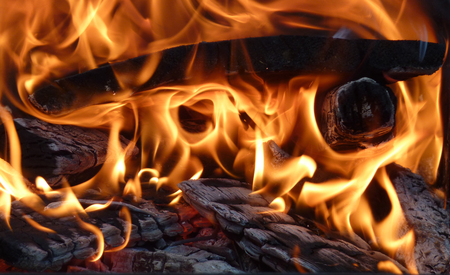Understanding Fire Safety Laws in the UK Countryside
When venturing out for wild camping adventures across Britain, knowing the rules around lighting campfires is not just a courtesy—it’s an essential skill for every family and camper. The UK countryside is protected by a web of laws and guidelines designed to preserve its beauty and ensure everyone’s safety. In England, Wales, and Northern Ireland, it’s important to remember that you do not have an automatic right to light fires on open land. Campfires can only be made with explicit landowner permission, even in seemingly remote spots. Scotland offers slightly more flexibility under the Scottish Outdoor Access Code, but even there, responsibility and respect are key; fires must be small, controlled, and never left unattended. Across all regions, special conservation codes—such as those found in national parks or Sites of Special Scientific Interest (SSSIs)—often carry stricter prohibitions or require advanced notice. Always check local authority websites or visitor centres for current regulations before your trip. By understanding and respecting these fire safety laws, you’re helping to protect the countryside for future generations while ensuring your wild camping experience remains both safe and enjoyable.
Choosing the Perfect Spot for Your Fire
When wild camping across Britain’s beautiful countryside, finding a safe and responsible location for your campfire is just as important as knowing how to light it. British landscapes—from the rugged moors of Yorkshire to the misty valleys of Wales—are rich in natural beauty but often fragile and subject to unpredictable weather. That’s why it’s essential to choose your spot with care, ensuring both safety and minimal environmental impact.
Understanding British Landscapes and Weather
Britain’s diverse geography means you’ll encounter a variety of terrains, from heathland to ancient woodland and open fells. Each setting comes with its own considerations. For instance, peat-rich soils in Scotland are particularly flammable, while frequent rain in the Lake District can make fire-lighting tricky yet increases safety from runaway flames. Always keep an eye on local forecasts—gusty winds or dry spells can turn a small spark into a hazard.
Checklist for Selecting a Safe Campfire Location
| Factor | Why It Matters |
|---|---|
| Distance from tents and gear | Prevents accidental fire spread |
| Away from overhanging branches and dense foliage | Reduces risk of igniting trees or shrubs |
| On bare earth or gravel, not peat or grass | Minimises ground damage and fire risk |
| Sheltered from prevailing winds | Keeps flames under control and smoke away from camp |
| At least 10 metres from water sources | Protects waterways from contamination and erosion |
Environmental Sensitivity: The Leave No Trace Approach
British wild camping etiquette strongly encourages the ‘Leave No Trace’ principle. This means using existing fire rings where possible, keeping fires small, and ensuring all traces are removed before you leave. If fires are prohibited—common in many national parks or during droughts—consider alternatives like portable stoves.
Local Regulations and Community Respect
Before lighting any fire, check local guidelines as rules can vary between regions such as Dartmoor, Snowdonia, or the Scottish Highlands. Engaging with these guidelines not only protects the landscape but also fosters goodwill with local communities who depend on these environments for their livelihoods and recreation.
Selecting the right spot is an act of care for both your family’s safety and Britain’s cherished wild places—setting the stage for happy memories around the campfire without leaving a mark on nature’s canvas.

3. Essential Tools and Materials for a British Campfire
When it comes to wild camping in the UK, building a safe and efficient fire starts with gathering the right tools and materials, all while respecting Britain’s beautiful countryside. Let’s look at what every camper should have on hand and how to gather local resources responsibly.
Gathering Local, Sustainable Firewood
In Britain, it’s important to follow the Countryside Code by collecting only deadwood found lying on the ground—never cut branches from living trees or disturb habitats. Look for dry twigs, sticks, and small logs about the thickness of your thumb or wrist; these burn efficiently and are easy to manage. Avoid picking wood from nature reserves or private land unless you have permission. Alder, birch, and ash are excellent native choices when available. Remember, always take only what you need, leaving plenty for wildlife and future campers.
Must-Have Tools for UK Campers
- Firesteel or waterproof matches: The British weather can be unpredictable, so reliable fire starters are crucial.
- Compact saw or folding knife: Handy for preparing kindling or trimming larger sticks safely.
- Small trowel: Ideal for clearing a fire site down to bare earth or covering ashes before leaving.
- Fire gloves: Protects your hands from heat and accidental burns—especially useful when teaching children about fire safety!
Extra Tip: Eco-Friendly Firelighters
If you need a little help getting your fire going (especially after a rainy day), pack some natural firelighters made from compressed wood shavings or waxed cardboard. These are widely available in outdoor shops across Britain and are safer for the environment than chemical alternatives.
By choosing your materials wisely and packing the right tools, you’re not just making campfire building easier—you’re helping protect the British outdoors for everyone. With a bit of planning, your wild camping experience can be both cosy and responsible!
4. Step-by-Step Guide to Building and Lighting Your Fire
Building a safe and efficient campfire is a wonderful parent-child activity, especially when wild camping in the varied landscapes of Britain. The following step-by-step guide is designed with families in mind, offering practical advice for tackling the often-damp British weather and ensuring everyone stays safe while learning together.
Choosing the Right Spot
Before you start, look for a clear area away from overhanging branches, dry grass, or tents. Use existing fire pits if available, as this minimises your environmental impact. Always check local regulations—some areas may have restrictions on open fires.
Gathering Materials
| Material | Description |
|---|---|
| Tinder | Dry leaves, birch bark, cotton wool (with a dab of petroleum jelly is great for wet conditions) |
| Kindling | Small twigs and sticks, preferably as dry as possible; dead wood from the ground is best |
| Fuel Wood | Larger sticks and logs; collect wood that snaps easily (not green or rotten) |
Laying the Fire Together
- Create a small fire base using stones to contain the flames and prevent spreading.
- Place a generous bundle of tinder in the centre. Let children help arrange it into a loose pile.
- Add kindling over the tinder in a tepee shape, leaving gaps for airflow. This is a great time for little hands to help place sticks carefully.
- Gradually stack fuel wood around your kindling tepee, but don’t smother it—air circulation is key!
Lighting Your Fire Safely
- If using matches or a fire steel, adults should demonstrate first. Allow older children to try under close supervision.
- Light the tinder at several points so it catches quickly. In damp British weather, focus on dry tinder and be patient—it may take a few tries.
Practical Tips for Wet Weather
- Collect extra tinder and kindling—wet conditions require more to get started.
- Look under dense trees or rocks for drier materials if rain has soaked everything else.
- If allowed, bring some dry kindling from home in a sealed bag for emergencies.
Remember: keep water or sand nearby to extinguish the fire completely before leaving your campsite. Teaching children these steps not only ensures safety but also helps them appreciate responsible outdoor skills—a truly memorable family experience in the heart of Britains wild beauty.
5. Keeping the Fire Under Control and Safe for All
Building a fire while wild camping in Britain is not just about warmth and cooking; it’s about respecting nature and ensuring everyone stays safe. Our British landscapes, from the heather-covered moors of Yorkshire to the ancient woodlands of the New Forest, are both beautiful and fragile. It’s crucial that we treat these places with care, especially when it comes to managing fire.
Best Practices for Safe Fire Maintenance
The first golden rule is always to keep your fire small and manageable. Not only does a compact fire use less fuel—helping us all protect precious natural resources—but it also reduces the risk of sparks flying into dry grass or leaf litter. Before lighting up, double-check that fires are allowed in your chosen spot; many areas across Britain have restrictions, particularly during dry spells to prevent wildfires.
Choose Your Spot Wisely
Select a clear, level area away from overhanging branches, bracken, and peat-rich ground, which can smoulder unseen and cause underground fires. In moorlands and woodlands, consider using a raised fire pit or placing stones in a circle to contain embers. If you’re with children, let them help by gathering rocks for the border—turning safety into a family activity.
Constant Vigilance: Never Leave Your Fire Unattended
It sounds simple, but never leave your fire alone—not even for a quick wander. Assign someone as the “fire warden,” perhaps taking turns so everyone feels involved and responsible. Keep water or a bucket of soil nearby at all times so you can quickly douse any stray flames or embers.
Preventing Wildfires: A Shared Responsibility
Britain’s delicate habitats rely on us all doing our part. Always burn only what you need—small twigs and seasoned wood work best—and avoid burning rubbish or wet materials that create excessive smoke. Teach young campers how to gently stir the ashes to check for hidden hot spots before bedtime, making it an educational moment as well as a safety measure.
By practising these habits together as a family or group, we help preserve Britain’s wild spaces for future generations of adventurers. Remember: a safe fire is an enjoyable fire—one that leaves no trace except for warm memories shared beneath the stars.
6. Eco-friendly Fire Practices and Responsible Cleanup
As we wrap up our wild camping adventure, it’s important to remember that building a safe fire is only half the story—being responsible stewards of the beautiful British countryside is just as vital. Whether you’re camping with family or friends, teaching and practising eco-friendly fire habits ensures that these natural spaces remain unspoilt for generations to come.
Extinguishing Your Fire Thoroughly
Once your evening around the campfire draws to a close, take extra care to extinguish the fire completely. Start by letting the wood burn down to white ash if possible. Pour water slowly over the embers, stirring with a stick or shovel until there’s no hissing sound. Gently feel for heat with the back of your hand—if it’s still warm, add more water and stir again. Never bury hot coals, as they can smoulder and reignite, causing underground fires which are difficult to control.
Leave No Trace Principles
The golden rule when wild camping in Britain is: leave no trace. Once your fire is out and cool to the touch, scatter any remaining ashes thinly over a wide area away from your campsite. Dismantle any makeshift fire rings and return stones or turf to their original places. If you’ve used a portable fire pit or raised grill, pack it away cleanly. Take all litter—including tiny bits like foil or food scraps—with you. This thoughtful approach helps preserve both the landscape and everyone’s outdoor experience.
Protecting Wildlife and Our Countryside
British wildlife—from hedgehogs scuttling through undergrowth to songbirds nesting nearby—relies on us to be gentle guests in their home. Avoid burning anything toxic (like plastics) that could harm animals or pollute soil and waterways. Stick to designated campsites where possible, or choose durable ground that won’t scar easily. By modelling respect for nature, especially when camping with children, we teach them how every action counts in protecting our wild places for future explorers.
By following these simple yet essential steps, we can all do our part in keeping Britain’s countryside safe, clean, and welcoming—a place where families can continue to make warm memories by the fire for years to come.


